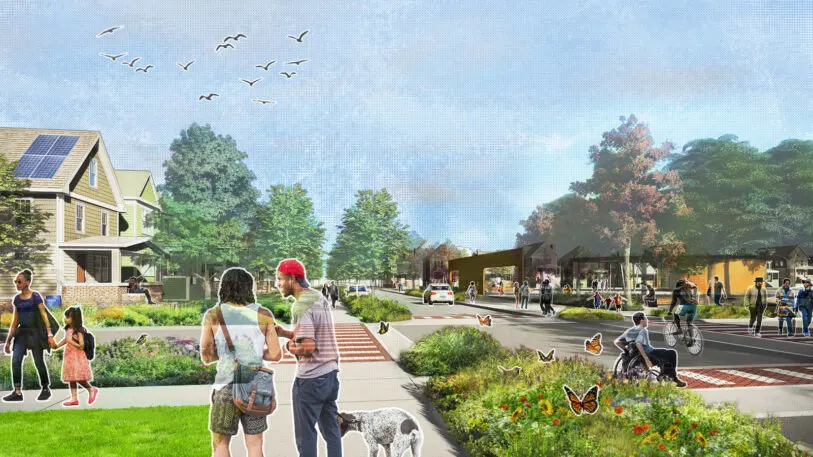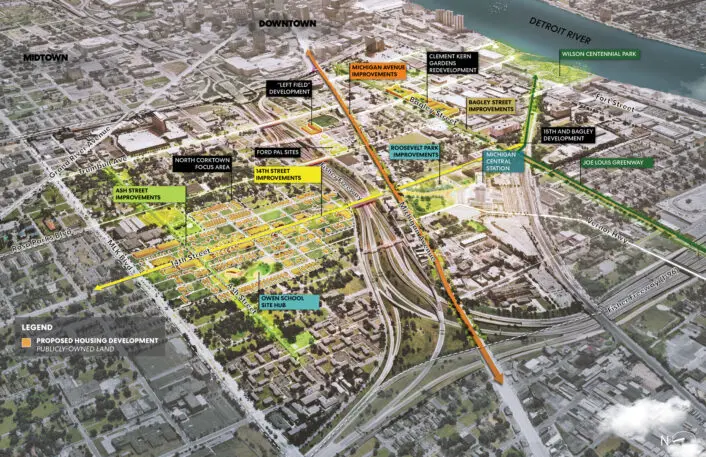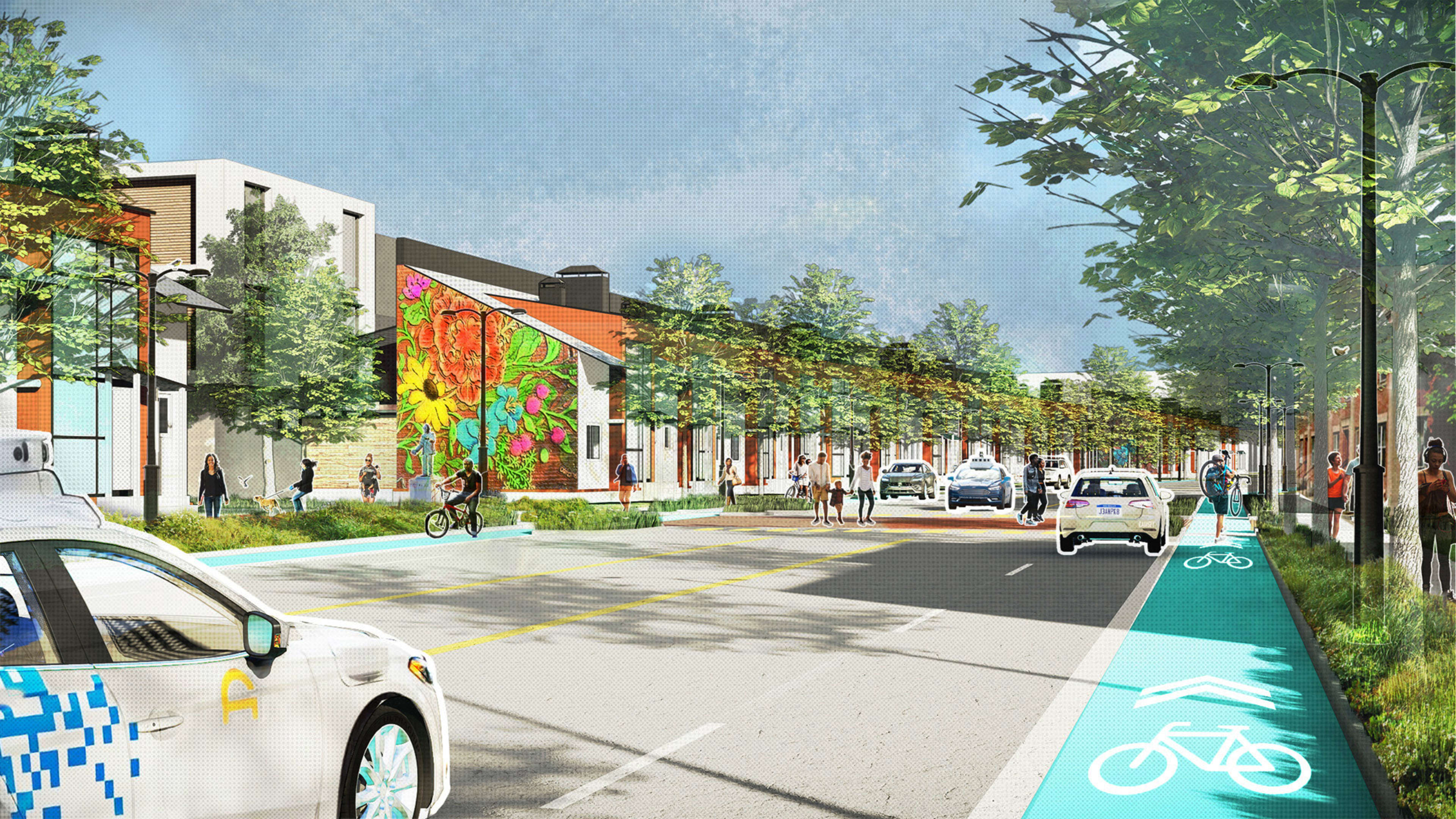One of Detroit’s oldest neighborhoods is about to change dramatically, and a new plan is being put in place to make sure the people who’ve long called it home aren’t displaced in the process.
The new development on the way is centered around one of the city’s most symbolic icons, the long-abandoned Michigan Central train station, which was purchased in the summer of 2018 by another Detroit icon, the Ford Motor Company. The company is in the midst of a multi-year $740 million restoration that will transform the 13-story Beaux-Arts building into the centerpiece of a 30-acre “mobility campus” that aims to bring a 1.2-million-square-foot innovation hub, an autonomous vehicle corridor, and 5,000 jobs to the Corktown neighborhood. With its central location, the train station’s large and untapped potential, and several other large adaptable buildings nearby, Corktown offers a neighborhood-scale canvas for a corporate entity like Ford. Work on the train station building is expected to finish by the end of 2022.

For a city with 35% of the population living under the poverty line, 5,000 high-paying jobs descending on one neighborhood sounds like a recipe for displacement. But in conjunction with planners from the design firm Perkins&Will the city has created a neighborhood-focused plan for accommodating change in Corktown while preserving what’s already there. The plan envisions updated parks, streetscape improvements, and nearly 1,000 new units of housing available both at affordable and market rates.

So the city launched a Corktown-focused neighborhood planning effort, one of more than a dozen that have been initiated in pockets around the city. By early 2019, public meetings were underway, and one of the biggest areas of concern was the potential that the proposed development would make the neighborhood unaffordable for longtime residents.
During the planning process, a study found that over the next seven to ten years the neighborhood could expect market demand for about 1,100 new homes, either for rent or for sale, partly as a result of Ford moving in. The city and the planners from Perkins&Will saw an opportunity to use the city’s tools to make sure growth happened in a way that is affordable.
“We’ve got the publicly-owned vacant land,” says Paul Kulig, an urban designer from Perkins&Will. “We can physically accommodate new growth for the 10-year projections, we can maintain a lot of the community-managed open spaces and the urban ag and things people have developed through their own efforts. We can accommodate new housing, new retail, and still have land leftover.”
The first phase of this new housing will be 115 affordable apartments built on the site of the former Tiger Stadium baseball field that will break ground this fall. Roughly 800 more units are planned for other parts of the neighborhood as well, including about 400 that will be priced for people earning less than 60% of the area’s median income. Many will be built on vacant sites the city owns and is currently rezoning to allow for mixed use and residential development—a process that, if done later, would add significant time and cost to the project.
“We have some tools to actually activate those parcels and push tenets of equitable development, really focusing on affordability and preservation,” says Schronce.
Kulig says the plan takes a pragmatic approach to the changes that are already underway in Corktown, where property values have been rising since the announcement of Ford’s plan to move in, a cause of concern for some longtime residents. By focusing on the conditions in the neighborhood, and what locals want to keep, the plan envisions more of a gradual transformation over time. “Whereas past projects to reimagine Detroit had these grand schemes that were citywide and looked good at 10,000 feet, I think what you’re seeing with the neighborhood plans is bumping into the reality of what’s on the ground in a very positive way,” he says.
Schonce says that while the major developments coming to Corktown are unique, the approach to planning the neighborhood’s future has relevance in other changing neighborhoods around Detroit. “As other neighborhoods around the city continue to repopulate and redevelop, there’s definitely some lessons you can look at in this work about how you can balance preservation and new development,” he says.
Recognize your brand’s excellence by applying to this year’s Brands That Matter Awards before the early-rate deadline, May 3.
